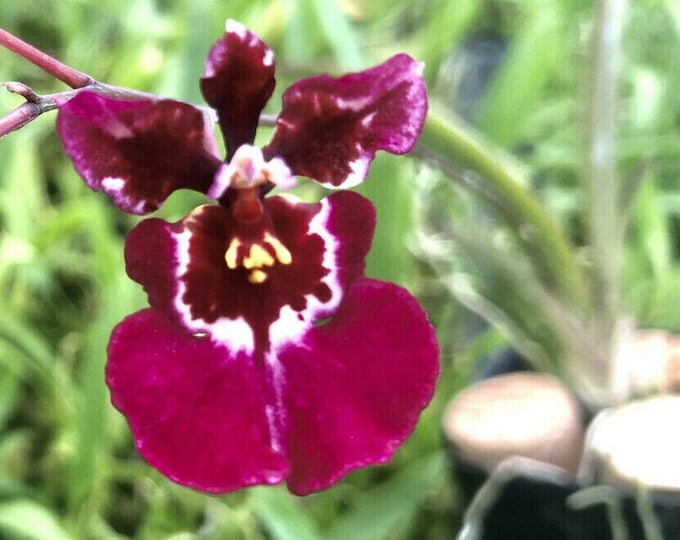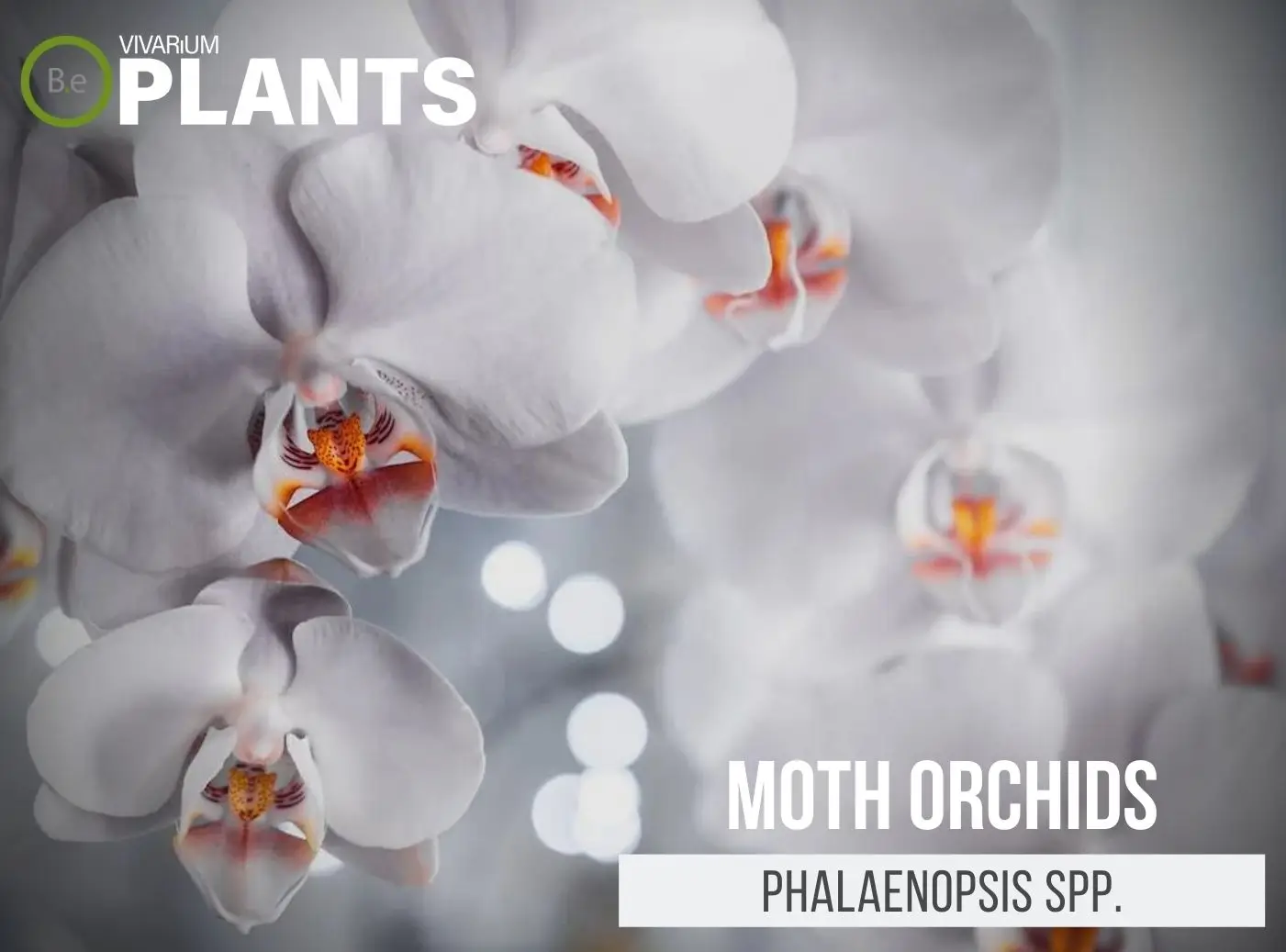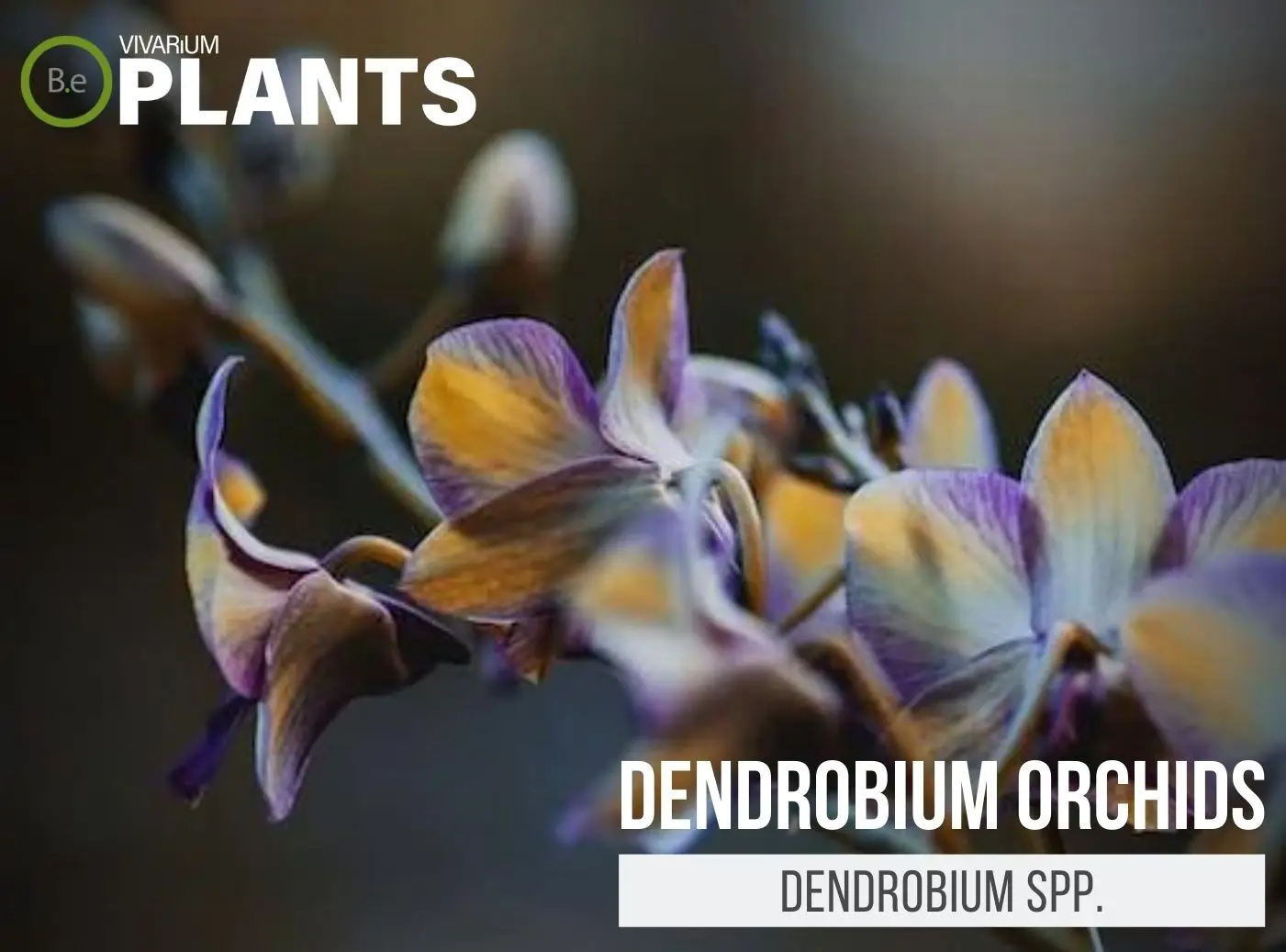Today in this article, we will explore the captivating and delightful world of terrarium orchids.
Tolumnia orchids, also known as equitant oncidiums, are among the most popular terrarium orchids.
This species is highly sought after for its unique features, vivid colors, and vibrant patterns.
Not only do they add a pop of color to any terrarium, but they are also surprisingly easy to care for.
In this article, we will discuss the characteristics of Tolumnia orchids, their ideal growing conditions, and tips for successful cultivation.
So, if you are an enthusiastic orchid–lover, let‘s dive right in!
Table Of Contents:
ToggleWhat Are Tolumnia Orchids?
Tolumnia spp. is an intergeneric hybrid of the orchid family.
This plant is usually one to two inches tall but can reach up to four inches in height with some room to stretch.
The leaves are pointed, a bit ovate, and they grow in curved, succulent rosettes.
Its small, bright yellow flowers have purple throat markings, with leaves that have a light to medium green color.


Tolumnia Orchids Facts
The Tolumnia orchid group was once known as Oncidium section Variegata, more commonly called “equitant oncidiums”.
These plants stay relatively small, typically no more than 6-8 inches tall.
One of the coolest facts about the Tolumnia spp. is that it will naturally produce propagules, which are small buds that grow off the adult plant.
This process takes a few months to occur, but when it does, these buds will form roots and grow into their own new plant!
These plants have been known to form lots of propagules, so it’s not uncommon to find many small plants growing near the main plant in nature.
Description
Tolumnia Orchids have ovate leaves that grow slightly curved, in tight rosettes around their base.
It has small, bright yellow flowers with a purple throat splotch and is about 2-4 inches in height.
It also has a light to medium green tinge to its leaves as well as multiple small propagules that grow off the main plant.
Habitat
Tolumnia spp. is native to areas like Mexico, Central and South America, and the Caribbean.
These plants are most often found in rainforests and tend to grow on trees or cliffs, not the ground.
Its native environment is generally warm and humid, with gravity-defying terrain.
pH Preference
Tolumnia Orchids prefer to be in slightly acidic soil conditions.
In its natural habitat, Tolumnia spp. can be found on acidic surfaces, and its ideal pH range is 6.0 to 7.5.
Though it is possible to care for and grow in slightly more neutral pH conditions, it is recommended that you keep it within the 6 to 7.5 range.
Vivarium Type
Tolumnia orchids are tropical species, so they will thrive in a vivarium that is humid and warm.
The ideal temperature range for these orchids is between 68 and 82 degrees Fahrenheit.
Humid terrariums as well as paludariums are fitting enclosures for this type of orchid.
Vivarium Placement
Tolumnia spp. should be placed in an area of the vivarium that can receive indirect, bright light but should be kept away from direct sunlight and artificial lights that produce UVB.
This plant will do well when planted in the background of the tank, somewhere near the top of the vivarium. It is a fairly slow-growing plant.
Keep this in mind when you are arranging your vivarium, giving space for the additional propagules around the base of the main plant.
Substrate
Tolumnia spp. can grow in many types of terrarium substrates and surfaces.
It is best when grown in a medium that allows for slight drainages, like sand, loam, and gravel. Coconut coir and peat moss are also suitable substrates.
Just make sure that whatever substrate you choose is not too coarse and is able to hold a small amount of moisture.
Lighting
The type of lighting you choose for your vivarium is important for a successful Tolumnia orchid tank.
This type of orchid prefers to receive bright, indirect light for about 10-12 hours a day.
LED lights with a cooler color temperature and lights that mimic a cloudy day or shaded forest are all suitable alternatives to the real sun.
Buy Tolumnia Orchids
When shopping for orchids, expect a few key indicators you are buying the best quality plant.
The plant should be pest free. The source of the orchid will more than likely not be in bloom so don’t worry if it arrives without flowers.
Click the image below to find out more about the current price and other relative info:
Tolumnia Orchids Care and Propagation
Tolumnia spp. is an easy plant to care for and propagate. This plant will naturally produce propagules and will fill out a space with small buds in a few months’ time.
If you don’t have a lot of time to wait, you can propagate the plant through division.
Simply divide the existing rosettes and spread them out to produce more plants.
When the propagules develop their own root system, be sure to provide adequate drainage to the new plants.
How to grow
Tolumnia orchids can be grown by division or by taking cuttings from the mother plant.
Cuttings should be taken when the plant is actively growing and when it is free of pests and diseases.
The cuttings should be planted in a well-draining potting mix and kept in a bright, warm, and humid environment.
Watering
Tolumnia spp. is a tropical orchid and therefore requires plenty of moisture to thrive.
In its natural habitat, this plant is usually found in areas of high humidity and damp soil, so a slight misting is ideal for the upkeep of this situation.
Be sure to give this plant a bit of time to dry off in between watering to help prevent rot and to keep it healthy.
Plants Similar To Tolumnia Orchids
Adding diversity to an enclosure is key to an aesthetically pleasing enclosure.
Try mixing up the look of your terrarium with different flora that can easily co-exist in the same types of environment.
Furthermore, if for some reason you find this orchid hard to acquire or would like to consider something similar to this terrarium plant…
Here are some other plants you might find may do well with or in the place of Tolumnia spp.:
Conclusion
Tolumnia spp. is a great beginner-level plant to have in a vivarium. This plant is easy to care for, with its natural propagation process.
It is an extremely versatile plant that can adapt well to a variety of environmental conditions.
Its bright yellow flowers make it an attractive addition to any tank and its propagules can provide an almost carpet-like effect to the floor of the terrarium.
If given the right amount of light, water, and drainage, Tolumnia orchids are an awesome addition to any tank.
Frequently Asked Questions
1. Place the Tolumnia orchid in bright, indirect light.
2. Keep the soil evenly moist by watering when the top of the soil is dry.
3. Mist the orchid with water every few days, especially if the air is dry.
4. Fertilize the orchid every two weeks with a balanced orchid fertilizer. (BONUS)
5. Repot the Tolumnia orchid every two to three years with a quick-draining orchid-mix soil.
6. Avoid temperatures lower than 60°F (16°C).
Yes, Tolumnias are very easy to grow. With the correct amount of light, water and humidity, Tolumnia orchids can easily thrive indoors and out.
To get Tolumnia to bloom, ensure that the temperature is between 65–80 degrees Fahrenheit, give regular fertilization and regular misting. Make sure to provide bright light and humidity of between 50–70%. Repot the Tolumnia every 1–2 years and keep it fairly dry during the winter months.
Yes, Tolumnia orchids are fragrant. They emit a sweet fragrance that has been described as having a spicy or citrusy aroma.
Plant Tolumnia orchids in an orchid bark and perlite mix in a pot with drainage holes. Water thoroughly, allowing the potting mix to dry out between waterings. Provide bright, indirect light and mist regularly to replicate a humid environment. Place Tolumnia orchids in an East or West facing window, or use LED grow lights to provide adequate light. Keep the temperature between 60–90 F (15–32 C) with night temperatures no lower than 55 F (13 C).
The main difference between Oncidium and Tolumnia is the size of their flowers. Oncidiums typically have larger flowers than Tolumnia orchids, with each flower around 4–7 cm across. Additionally, Oncidiums tend to grow in tall, cylindrical spikes, with multiple blooms on each spike, while Tolumnia orchids usually have only one or two flowers on each spike. Oncidiums also require more light than Tolumnia orchids, and can also tolerate higher temperatures.






